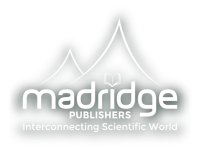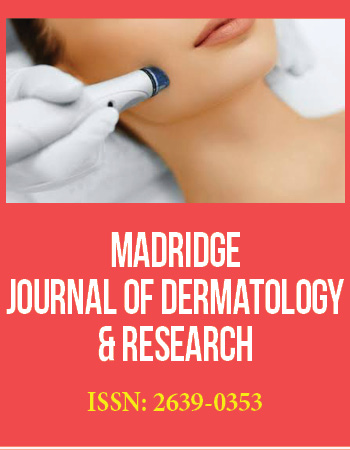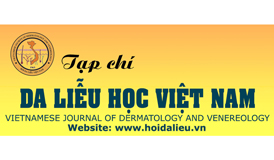Research Article
Facial Rejuvenation, Laser, Grow Factors as a Regenerative Procedure
Clinica Dermatologica y Cirugia Estetica de Puebla SA de CV, Mexico
*Corresponding author: Aristides Arellano, Clinica Dermatologica Y Cirugia Estetica De Puebla, Mexico, E-mail: aristidesarella@yahoo.com.mx
Received: August 12, 2021 Accepted: September 10, 2021 Published: September 17, 2021
Citation: Arellano A, Arellano D A, Arellano D D. Facial Rejuvenation, Laser, Grow Factors as a Regenerative Procedure. Madridge J Dermatol Res. 2021; 5(1): 102-105. doi: 10.18689/mjdr-1000127
Copyright: © 2021 The Author(s). This work is licensed under a Creative Commons Attribution 4.0 International License, which permits unrestricted use, distribution, and reproduction in any medium, provided the original work is properly cited.
Introduction
Cosmetic Surgery belongs to the most modern professional activities in the world. Nowadays, man strives for a better social and economic survival, and the lack of physical defects often contributes to success in the daily struggle.
The skin, is the largest and most versatile organ of the human body, protects the inner body from bacteria and injury. Because of its considerable size and location, the skin is highly vulnerable to a variety of diseases and disorders, some of which may require surgery. Fortunately, most skin surgeries and treatments can be performed in a physicianʼs office with minimal discomfort or risk.
Histologically the skin have 3 different layers
EPIDERMIS needs to be soft, with a compact stratum corneum, full of healthy keratinocytes and normal-sized melanocytes that function properly with melanosomes evenly distributed throughout.
DERMIS used to have a normal circulation, intact collagen fibers (firmness), with intact elastin fibers (tightness) and be rich in glycosaminoglycan (hydration).
SUBCUTANEOUS LAYER must have had lipocytes, lipoblasts with well-defined lobules. Be elastic and a firm septum encapsulating and dividing the lobules. Medicine acts on deformities, being an inestimable ally of physical, feminine and masculine beauty, fighting ugliness, obesity and senility. Self-examination of the skin should be undertaken regularly to determine if any changes have occurred. Moles which change in size, color, shape or elevation should be brought to the attention of a physician. Persistent itching, oozing, crusting or bleeding of a lesion are warning signs that may indicate the presence of cancer. Immediate attention to these significant changes may prevent more serious complications later.
During the aging process the thick skin sags more than it wrinkles; wrinkles appear later. The thin skin wrinkles more than it sag; wrinkles appear early. But we need to be awake about the skin cancer is the most common of all cancers. It is estimated that it will be diagnosed in approximately 500,000 patients this year. According to medical experts, the principal cause of skin cancer is overexposure to the ultraviolet rays of the sun.
INTRINSIC AGIN CHANGES: Skin and muscle laxity, expression lines (superficial wrinkles), dryness of the skin and overall thinning.
PHOTOAGING SIGNS: leatheriness, dryness, nodularity and skin hypertrophy. Yellowness, telangiectasias, deep wrinkles in different face zones. Accentuated skin furrows, sags and bags in the mandibular area and a great variety of benign, malignant and premalignant lesions.
Cosmetic surgery-treatments combines art with science, to achieve through certain techniques or procedures a radical improvement in its physical appearance, without implying miraculous transformations since it is not an exact science, it depends on many factors such as physical condition, the elasticity and condition of the skin, presence or absence of fat, number and type of wrinkles, hormonal influences, etc., that may have an impact on the final result.
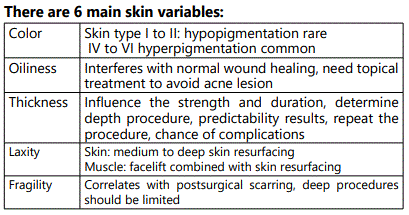
Many people who want to improve their appearance will seek the services of a physician to surgically correct a variety of skin blemishes and disfigurements. These include birthmarks, moles, warts, age or liver spots, wrinkles, cysts, scars and actinic keratoses. Baldness can also be treated by surgical implants.
The work of the physician consists of locating the scars in the natural lines of the body where they are less or almost invisible, being also easily concealed by makeup, hairstyle, bathing clothes, etc.
One of the most important purposes of plastic surgery is to plan and perform surgical procedures in order to correct the physical changes that follow the aging process. However, plastic surgeons and dermatologist were not trained, nor had we paid attention to detect the physiological causes of aging. In the past decade, a new branch of medicine, the medicine of anti-aging, has been born. With the information it offers, the fundamental biochemistry and the genetic changes that initiate and cause the physical changes of aging can be better understood. But, how to treat the aging process?
Plastic surgeons and Dermatologists are being induced to have a different, more ambitious and practical perspective. They begin to examine the aging process not only from the point of view of its effects, but also from its causes and mechanisms.
Incorporating this new perspective for the diagnosis and treatment of the changes that occur in the organism with aging, it will be possible to prevent or delay the appearance of some of its manifestations and obtain better and more lasting results in surgical or medical-surgical treatment. of its alterations. It will also be possible to achieve a remarkable improvement in the quality of life of patients, with more time and better health.
In order to delay or control the aging process, it is necessary that it be understood. Although there is no single cause of aging, a general equation can be used to help understand the interrelated effects that occur in that process. Most of the changes related to aging are caused by the fluctuation of the level of four fundamental or basic processes and their relation to each other: glycation, inflammation, oxidation and methylation.
It is usually observed with loss of tone and thickness of the skin, decreased elasticity and the average content of collagen and elastin. There is also an evident change in its contour, due to the loss of subcutaneous fat, muscle tone and prominences, due to loss of bone support.
In the neck, the loss of collagen and muscle tone manifests its effects with loss of the cervical-mental angle and in general of the elasticity of the skin, presenting wrinkles and falling neck tissues. These changes add to the loss of fat and the fall of facial tissues in general, including muscles and skin.
In a healthy skin survey is important to have a silky touch, rosy, radiant, glowing and vibrant. The skin must be tight, moist and clear.
The causes of skin changes are due to the high level of free radicals that cause reduction of the collagen deposit and loss of elasticity. In the normal aging process, the skin is wrinkled due to the cross-linking of glycated proteins and key hormones (mainly testosterone loss, reduction of growth hormone and estrogen and progesterone levels) as can be seen in the dermis.
Cosmetic surgery-treatments for the aforementioned changes are basically rhytidectomy, blepharoplasty, laser peeling, chemical peeling, lipo-injection, muscle suspension and restoring procedures like PRP.
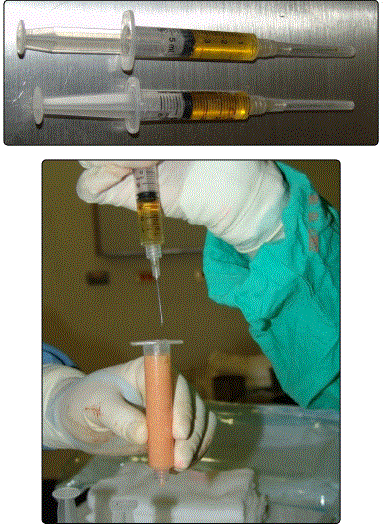
Platelet Rich Plasma is one of the most advanced techniques to treat aging in the face, neck, décolleté and hands, especially when tissue damage occurs prematurely. It improves the firmness of the skin, reduces stretch marks and cellulite, as well as it can also be applied for different needs; This technique was born for the reconstruction of tissues such as: in the hair to reduce its fall is the most used procedure in the world for the regenerative treatment of joint and tendon injuries such as chronic sprains.
It is a procedure that does not use substances external to the body but uses the patientʼs own platelets (bloodstream cells); there are no side reactions. It is a treatment that differs from others since it acts directly at the cellular level. The application of this therapy repairs aging tissues, stimulating cellular skin regeneration and stimulates the production of collagen fibers, giving the skin a rejuvenating, firming effect and moistening. The procedure uses the patientʼs own platelets to achieve cell regeneration, thanks to growth factors (FC), which are a biological mediator that produces a series of effects at the cellular level, such as repair, the formation of new vessels, cell proliferation and differentiation.
Extracellular matrix synthesis and remodeling. Venous blood is extracted from the patient and then centrifuged until the plasma is separated from the erythrocytes, the plasma rich in platelets from the rest of the blood components and is activated and then injected into the patient by mesotherapy.
Skin Resurfacing carried out with the Erbium: Yag and CO2 lasers have been used in the forehead, the upper and lower eyelid, the internal and external Chantal of the eyes, the nose, the cheeks, the Perioral zone and the chin. In those zones sometimes we perform one or two passes. Permitting the treatment of fine and depth wrinkles, age spots, acne scars and photo aging.
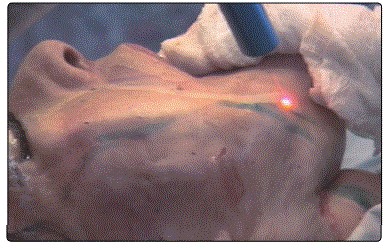
However, in areas where the surgical procedure was performed, we employ only the CO2 laser in one pass. The laser is normally applied in the areas describe before during the same procedure. The laser Fluence is increase or decrease depending on the wrinkleʼs deepness, acne scars, skin sun damage, thickness, texture and color. In the first step, the laser is applied in the area to be treated. Once the first pass is finished, we lived the burn skin in place and perform the second step. Sometimes on the cross-feetʼs or the Perioral area a third step is carried out.
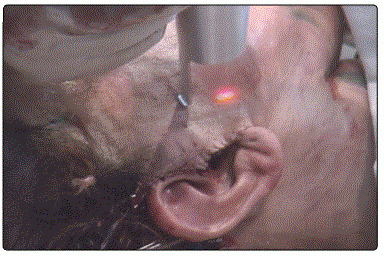
As it was mentioned above, it is important to understand that the laser should be deeper in the central part of the face and lightly in the area were the surgical procedure was performed. In the cheeks were the SMAS plication and skin undermining was done. Employing the CO2 laser at 5 watts on the skin flap there is no different skin color; texture or border remains by the change of laser. With this method the redness and changes in color pigmentation disappear at the same time in both areas, taking only 2 or 3 weeks for patient with skin type 3, 4 and 5 to get the same skin color and texture.
There are many options to rejuvenate a face with laser surgery and treatments, such as:
Skin laxity and wrinkles correctionFine lines: erbium: Yag laser in photo types 3,4 and 5
Inphoto types 1,2 or 3 with fine wrinkles: CO 2 and erbium: Yag combined or separate.
In Fitzpatrick skin ton 1, 2 and 3 withmild laxity: CO 2 laser.
Patients with deeper wrinkles and general laxity we need to performed facelift and CO2 laser in skin tones 1 and 2 and erbium: Yag laser in tones 3,4 and 5.
All above and muscle laxity they will need facelift, neck tightening and CO2 and erbium: Yag laser as we describe before.
To rejuvenate the middle third area of the face like the Internal cantus, the Crowʼs feet, Dorsal and lateral wrinkles of the nose, Chin and Perioral wrinkles and Cheeks and nasolabial folds we can apply laser treatments helping us to achieve a wonderful result.
Improving the most important skin CLINICAL ASPECTS for instance: A smooth, firm, evenly colored skin with free environmentally induced deterioration or diseases. Functioning properly with optimal skin tolerance and good hydration.
Results
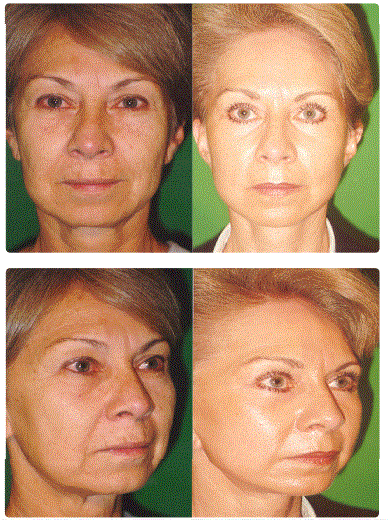
Conclusion
With careful patient selection, precise depth control cosmetic surgical procedure can be performed simultaneously with laser resurfacing, and grow factors giving the patient maximal improvement in texture and laxity with low risk of complications and a single recovery period.
Erythema is not an enemy. Patients with greatest degree and duration of erythema often have better results. Lasers that do not produce erythema are too superficial to affect collagen remodeling.
FACE LIFT TECHNIQUES TODAY MUST BE SAFETY, DURABLE AND PREDICTABLE.
References
- Tessier P. The conjunctival approach to the orbital floor and maxilla in congenital malformations and trauma. J Maxilofac Surg. 1973; 1(1): 3-8.
- Shapahay SM, Strong MS, Anastasi GW, et al. Removal of rhinophyma with the carbon dioxide laser. A preliminary report. Arch Otolaryngol. 1980; 106(5): 257-259. doi: 10.1001/archotol.1980.00790290009004
- Fitzpatrick RE, Ruiz-Esparza J, Goldman MP. The depth of thermal necrosis using the CO2 laser: a comparison of the superpulsed mode and conventional mode. J Dermatol Surg Oncol. 1991; 17(4): 340-344. doi: 10.1111/j.1524-4725.1991.tb01708.x
- Zweig AD, Meierhofer B, Muller OM, et al. Lateral damage along pulsed laser incisions. Lasers Surg Med. 1990; 10(3): 262-274. doi: 10.1002/lsm.1900100306.
- Weinstein C. Ultrapulse carbon dioxide laser removal of periocular wrinkles in association with laser Blepharoplasty. J Clin Laser Med Surg. 1994; 12(4): 205-209.
- Fitzpatrick RE, Goldman MP, Ruiz-Esparza J. Clinical advantage of the CO2 laser superpulsed mode. Treatment of verruca vulgaris, seborrheic keratoses, lenntigines, and actinic cheilitis. J Dermatol Surg Oncol. 1994; 20(7): 449-456. doi: 10.1111/j.1524-4725.1994.tb03215.x.
